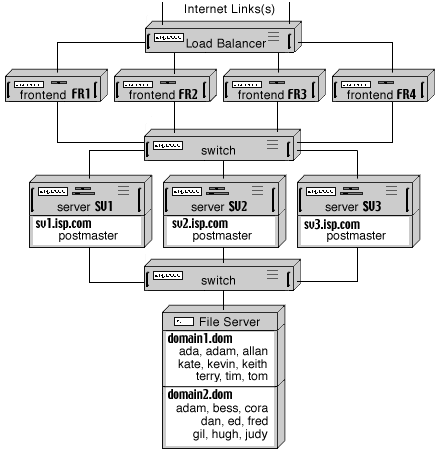

The recipients, using the DNS MX-records to find the recipient hosts on the Internet. Them to some other mail server, or it can deliver messages directly to When sending messages over the Internet, the SMTP module can forward The SMTP module sends the EHLO command only if this line contains the ESMTP word. If this option is not selected, the SMTP module checks the remote server greeting line. To remote servers, trying to establish the extended SMTP (ESMTP) protocol. Always use EHLO If this option is selected, the SMTP module always sends the EHLO command Only the time stamp values are left in those fields, while all other field values are replaced with some dummy data. In the messages it sends to non-client network addresses. Hide Received Fields If this option is selected, the SMTP module modifies all Received header fields With the same message - for the remaining recipient addresses. Then the message body is sent, and then the module repeats the sending procedure If a message has too many recipients, the specified number of recipients is sent, Recipients/Message This setting specifies how many recipients can be sent with one message. Set this setting to OS Default to let the server OS pick the See the Domains section for more details.Īll other messages are sent out via the Default SMTP IP Address. To that message, and if the SMTP module needs to send such a message, it will send it via the assigned local address. Configuring the SMTP moduleĭefault IP Address When CommuniGate Pro receives a message, it can assign one of its local network addresses The DNS records should point to theĬomputer running your mail server. Server, you should register your domain name, and ask your provider to register If you want to receive messages from the Internet with your own mail Several connections to the mail server serving that domain and send those If there are several messages to one domain, the SMTP module can open But if there are too many addresses, the SMTP module canīreak them in several portions and send several copies, each containing Serving that domain, and that server delivers messages to all recipients SMTP module can transfer only one copy of the message to the mail server When a message contains several addresses within the same domain, the When all messages to that domain are transferred, The DNS, the sending mail server opens an SMTP connection to that serverĪnd transfers the message(s). When the network address of the recipient mail server is received from The so-called DNSĪ-records contain the pairs that link a computer name to its global Internet The receiving mail server name into its network address.

Sending mail server consults the DNS again. When the name of the recipient computer is retrieved from the DNS, the Mail is sent to lower-priority computers (called Back-up Mail Servers).īack-up mailer servers then try to deliver the message to the primary server. If one (high-priority or primary) computer cannot receive mail, There can be several MX-records for one domain (with different priority MX records can specify that mail for the domain shouldīe sent to the computer, and mail to the domainĮ should be sent to the computer. Name of the computer that actually receives mail for that domain. So-called MX-record in the Domain Name System. (part of the E-mail address after the symbol) should have a special Mail servers use the global Domain Name System to find the networkĪddress of the recipient computer or the recipient mail server. Simple Mail Transfer Protocol (SMTP) and DNS The CommuniGate Pro SMTP module also implements a protocol variation called LMTP The CommuniGate Pro SMTP module supports the AUTH extensionĪnd it allows remote users to authenticate themselves before submitting messages. The STARTTLS SMTP extension, and it can receive and send mail The CommuniGate Pro SMTP module supports special "secure ports" and Mailer applications open TCP connections to that address All mailers haveĪ setting called SMTP Host Address that specifies the network address of Then forward the submitted messages to the recipients. Mailer applications use the SMTP protocol to submit messages to the mail One or several messages and closes the network connection. To the recipient's computer and establishes a network link. A computer that has a message to send connects

The Simple Mail Transfer Protocol allows computers to transfer messages The SMTP and ESMTP Internet protocols via The CommuniGate Pro SMTP module implements E-mail message transfer using


 0 kommentar(er)
0 kommentar(er)
